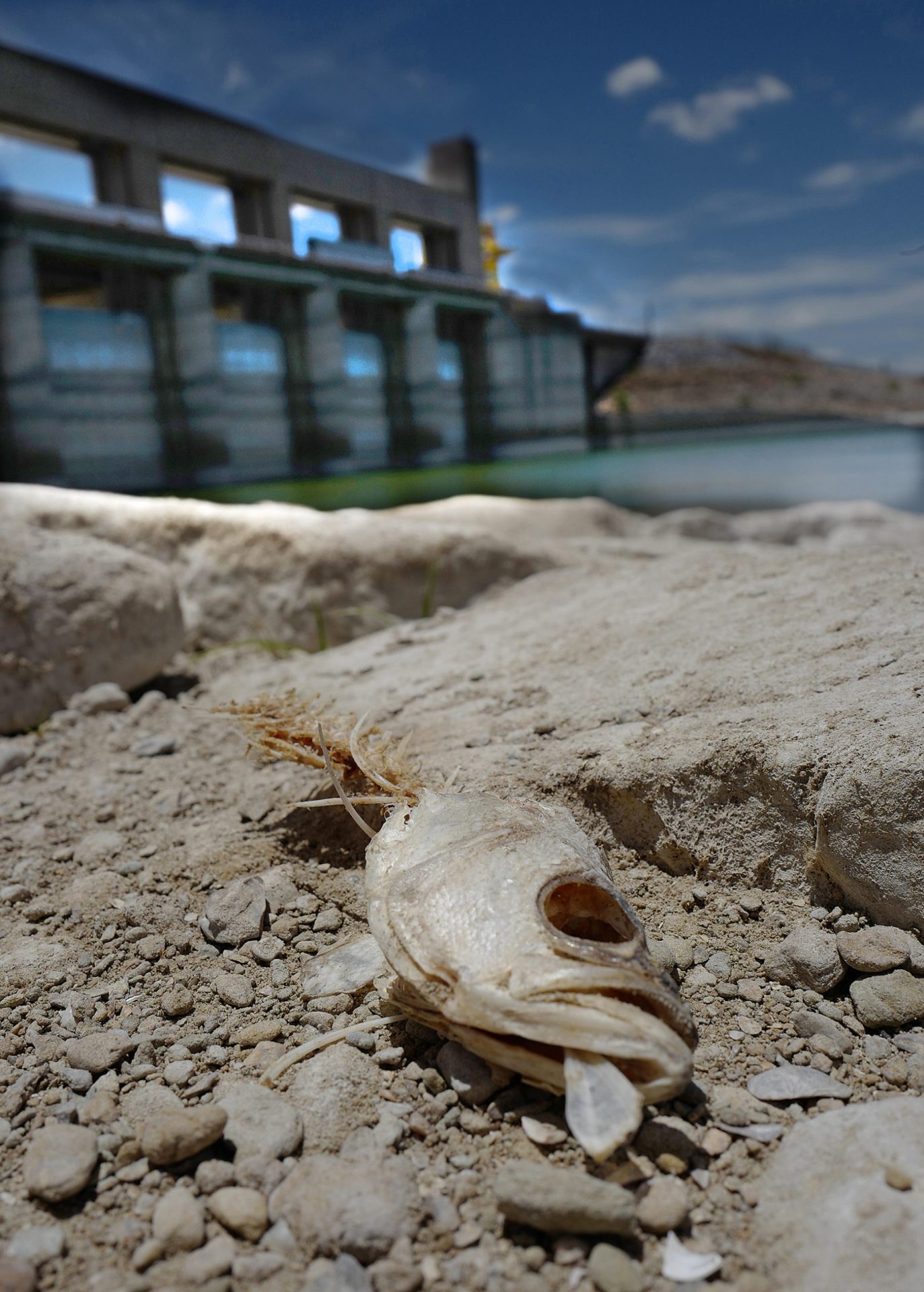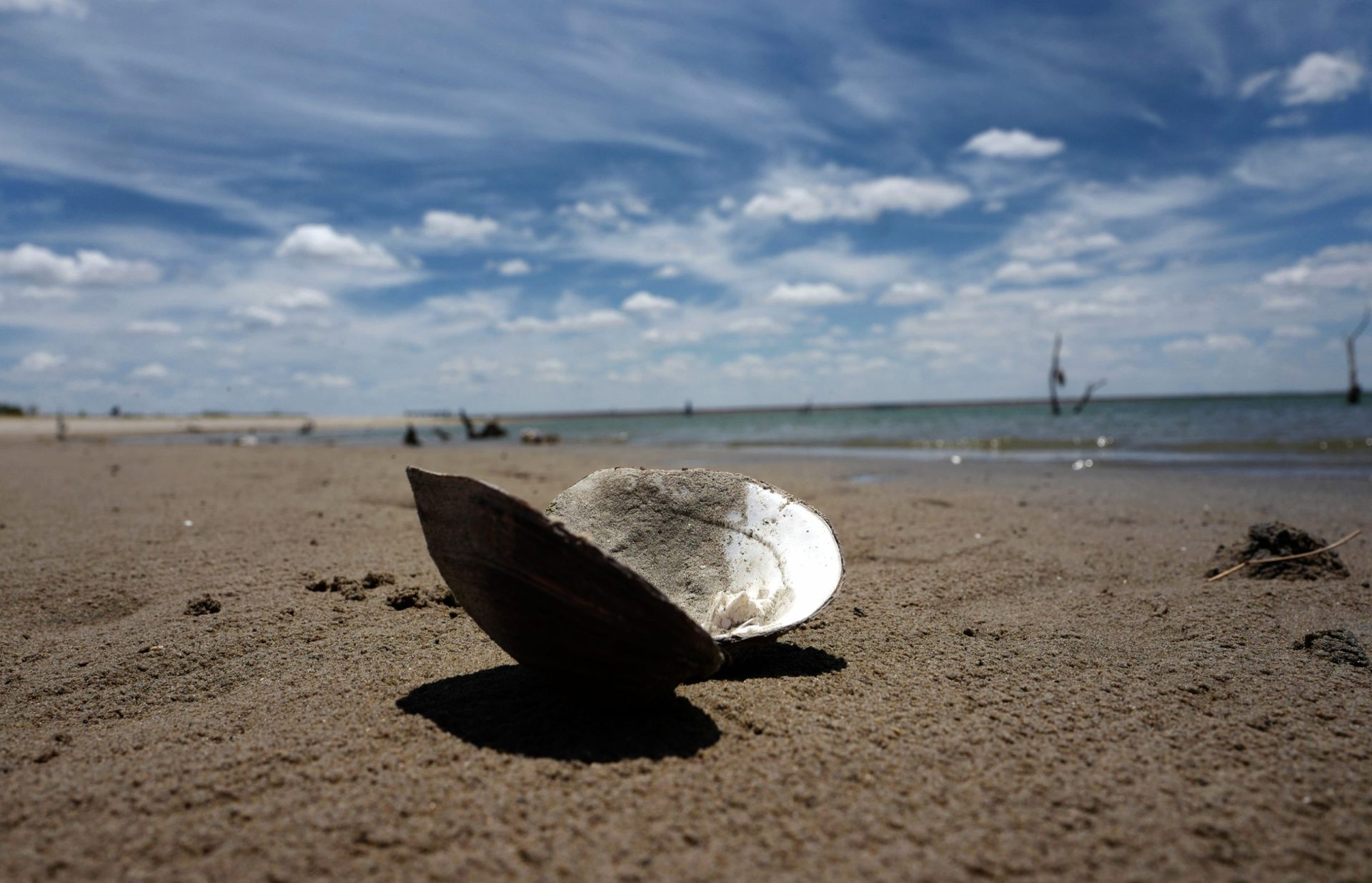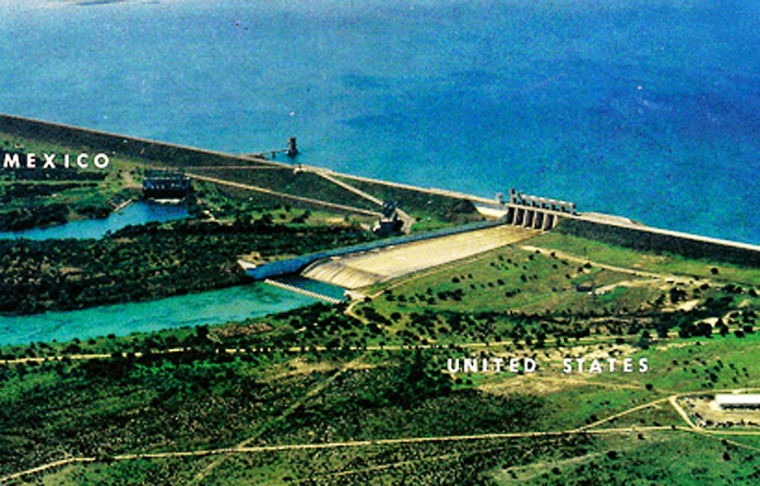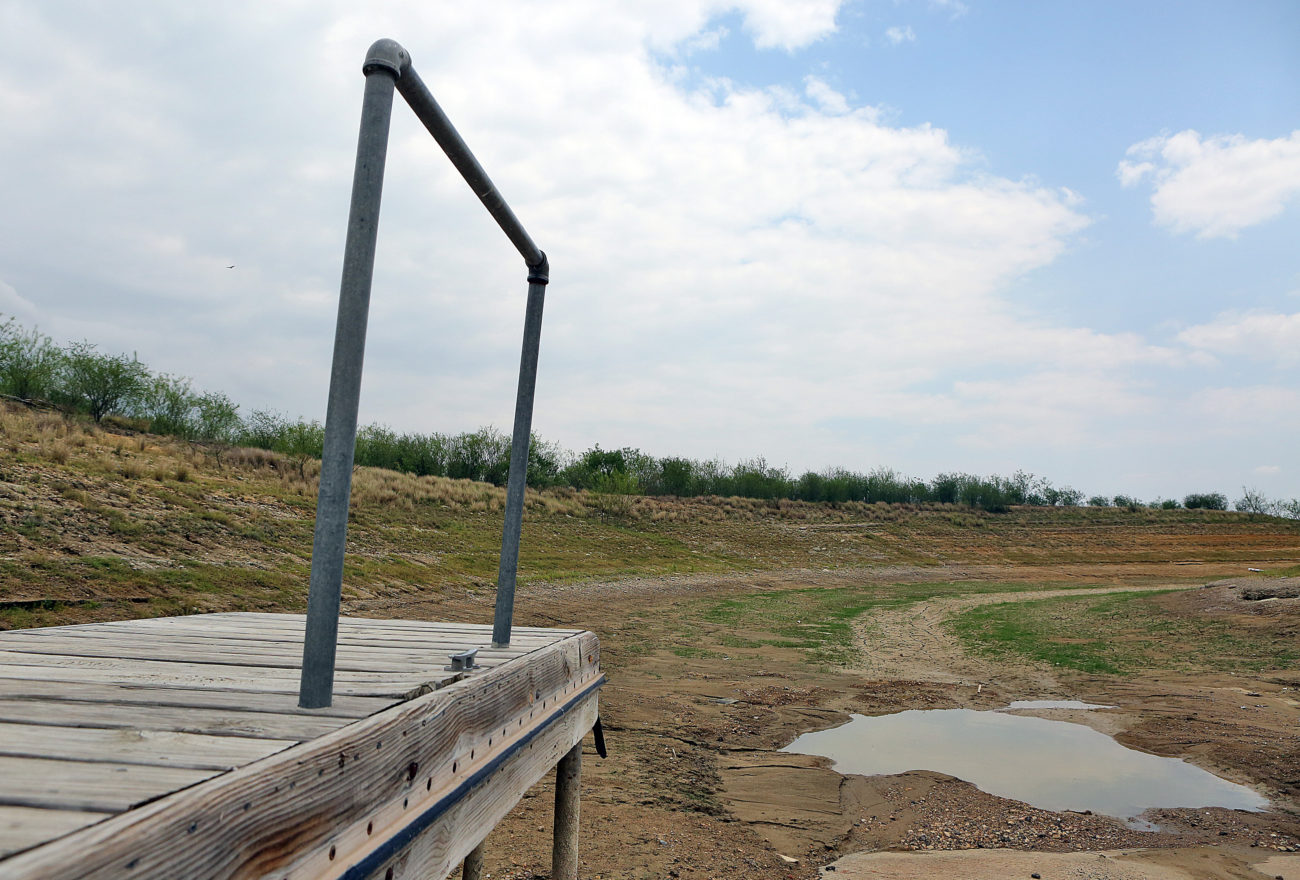|
Only have a minute? Listen instead
Getting your Trinity Audio player ready...
|

Lifelong farmer Dale Murden remembers wondering why his grandmother would collect rainwater at her home in rural Elsa to water her flowers.
It was because she knew something that Murden wouldn’t come to fully realize until he was an adult himself — water is scarce. It’s precious. And it’s life.
Not just for his grandmother’s flowers, but for the entirety of the Rio Grande Valley’s agricultural industry and for residents.
Today, Murden serves as the president of Texas Citrus Mutual, a non-profit trade organization representing the state’s citrus growers in Hidalgo, Cameron and Willacy counties.
Two years after a devastating freeze decimated citrus orchards in February 2021, his industry is just beginning to recover, Murden said. But now, growers face another hurdle.
Just as greenhouses are about to deliver the young trees growers need to rebuild their orchards, the Valley is running low on the water needed to nurture them.
“We don’t want to stick them in the ground and just watch them die to drought,” Murden said.
Over the summer, much of the Valley has experienced 70 days or more of temperatures exceeding 100 degrees, and 25% or less of average annual rainfall totals, according to data published this week by the National Weather Service at Brownsville.
But the lack of rain isn’t the biggest cause of water worries for farmers like Murden. Instead, it’s our neighbors to the south that have him more concerned.
The United States has a water sharing treaty with Mexico whereby Mexico is obligated to deliver water to the two international reservoirs that supply the Valley’s water, Falcon and Amistad.

The 1944 treaty stipulates that Mexico must deliver 1.5 million acre-feet of water over the course of five years from the six Mexican tributaries that feed the Rio Grande.
Ideally, those deliveries would be spread out in equal increments of about 350,000 acre-feet per year.
But three years into the current cycle, which started in October 2020, Mexico is already two years behind.
“We’ve only received less than 40% of the deliveries so far. It’s one of the lowest levels of deliveries that we’ve gotten,” Maria Elena Giner, commissioner of the International Boundary and Water Commission, or IBWC, told The Monitor in an exclusive interview Friday.
The IBWC is the federal agency responsible for enforcing the treaty with Mexico.
However, Mexico’s failure to deliver water in a timely fashion is nothing new. Murden referred to it as an “age old problem” that he has spent the last 25 years of his career contending with.
And now it’s threatening to put the $500 million per year citrus industry out of business.
During the last three cycles — from 2005-2020 — Mexico has defaulted, or come very close to defaulting, on its treaty obligations by similarly failing to deliver the minimum 350,000 acre-feet per year.
The unreliability of the water supply makes it impossible for farmers to plan out their seasons.
“If I could count on the annual payment, the 350,000 acre-feet a year, along with the rainfall, at least I could plan. Not being able to plan is probably the most frustrating thing in the world,” Murden said.

So little water was available in the reservoirs in January that Murden’s supplier, Hidalgo and Cameron Counties Irrigation District 9, informed him and other farmers there’d only be enough to irrigate their fields once.
That forced growers to make some tough decisions about where to focus their efforts over the spring, but there was still optimism about the end of summer. That’s because, historically, September often brings the rains.
But the rains have failed to materialize this month.
And typically, October, November and December bring little precipitation to the Valley.
At the same time, Falcon and Amistad reservoirs have dipped below a combined storage capacity of 25% and are continuing to nosedive.
It’s beginning to paint a bleak picture for Murden.
“That means I go into next year out of water. I have never had that happen in my life,” Murden said. “Yeah, I got sober real quick.”
For Sonny Hinojosa, general manager of Hidalgo County Irrigation District No. 2, there is no other solution than for Mexico to make good on its deliveries.
“We’re gonna have to get water from Mexico. There is no alternative. Enough political pressure has to be put on Mexico for us to get water,” Hinojosa said.
Commissioner Giner said she hears their concerns. Since being appointed as the IBWC commissioner in 2021, she has spent the last two years revamping the understaffed, underfunded federal agency.

A big part of that work has been to create an amendment, known as a “minute,” to the 1944 treaty.
“We are on target for that minute to get it done this year,” Giner said, adding that the IBWC is “in the final negotiation stages on what we can do to grow the pie.”
Though she said she was unable to reveal specifics of the proposed minute, she hopes it will bring more predictability to the water deliveries.
“What I’m doing right now is I’m trying to work, with this minute, of changing of practice. Of changing of practice that will get us closer to getting more regular delivery into our reservoirs,” Giner said.
However, the commissioner explained that there’s binational cultural differences, as well as internal squabbles within the Mexican government, that have made the deliveries so fraught over the last decade or so.
In the United States, farmers like Murden wonder why Mexico can’t deliver an average of 350,000 acre-feet of water per year.
In Mexico, meanwhile, farmers view that timeline as something that can be fulfilled at the end of a cycle — hopefully after a big storm has refilled the Valley’s reservoirs so water doesn’t have to be diverted from the Mexican ones.
Doing that, however, leaves too much to chance, Hinojosa explained.
“Mexico cannot gamble on Mother Nature to take care of it. They have to be proactive and release water on an annual basis. That has to happen,” he said.

Then there’s differences of opinion between different Mexican states.
“The fact of the matter is, Mexico is hurting their own people. Tamaulipas isn’t getting any water either,” Murden explained, referring to the Mexican communities on the other side of the river.
Tamaulipan farmers and residents depend on the water deliveries, too.
But the water comes primarily from the arid mountains in the Mexican state of Chihuahua, where farmers are “turning desert into oases,” Murden said.
It was a conflict that Giner spoke about, as well.
“The farmers in Chihuahua don’t have an issue with water being delivered to the United States, they just don’t want to deliver it to Tamaulipas because their perspective is it rains more in Tamaulipas,” Giner said.
Giner, Murden and Hinojosa all explained that the bottom line is Chihuahua wants to hang onto as much water as it can, and that has led to repeated incidents of treaty noncompliance.
Hinojosa said that’s unacceptable. He urges policymakers like Giner — and moreover, the U.S. State Department — to ramp up the pressure on Mexico.
He’s not the only one.
The Valley’s local delegation of lawmakers — on both sides of the aisle — have recently begun to ramp up that pressure.
U.S. Rep. Monica De La Cruz, R-McAllen, has teamed up with U.S. Rep. Henry Cuellar, D-Laredo, to introduce a bipartisan resolution in support of the diplomatic discussions needed to secure Mexico’s treaty compliance.

“The Mexican government bears a responsibility to honor the terms of this treaty. American farmers and ranchers should not bear the burden of Mexico’s failure to uphold its end of the bargain,” De La Cruz said during a speech on the U.S. House floor on Tuesday.
U.S. Sen. John Cornyn has also weighed in on the issue in an August phone call and letter to U.S. Secretary of State Antony Blinken.
“It is mission critical time; some agriculture production may cease, and businesses shuttered if water is not released now and every year per the treaty,” Cornyn stated in the letter, which was also signed by De La Cruz, Cuellar, U.S. Rep. Vicente Gonzalez, D-Brownsville, and several other lawmakers.
In the short term, Giner says she will continue doing what she can to urge her Mexican counterparts to fulfill their treaty obligations.
In the medium- and long-term, she’s working on finishing the new minute by the end of the year, and on seeking help from within our own government.
“We’re working not only on the federal level, but at the state level. Will that yield fruit? I do not know,” Giner said.
However, those assurances do little to assuage the growing fears of farmers.
“What do you do, right? It’s eatin’ on ya, and there’s not a damned thing I can do about it,” Murden said.
“I just sit there and watch trees die, I guess. I don’t know.”



